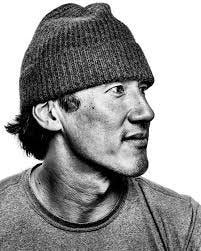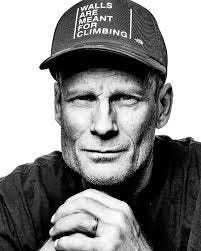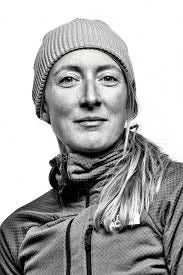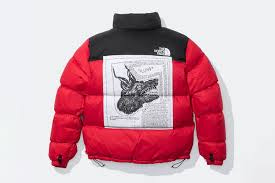How CMO Sophie Bambuck of The North Face, Nike, Converse, and Everlane Builds Brands for Everyone
I talked to Sophie Bambuck about the North Face’s We Play Different ad, planning brand campaigns and more
I spoke with Sophie Bambuck, former CMO of The North Face, about the balance between high-performance, high-fashion, and relatability in their brand strategy.
👋 Hi, I'm Amanda. I'm a brand strategist and fractional CMO. I help founder-led businesses turn belief into brand—and brand into a strategic asset that works as hard as you do. I share weekly deep dives with actionable advice on brand building—plus interviews with the people in the trenches. I also work 1:1 with founders and teams. Book a chat here.
Who will love this
Anyone who had a strong reaction to the We Play Different campaign
North Face Nuptse puffer lovers
Marketers leading well-loved brands
Today
Good afternoon 👋
When I saw The North Face's new brand ad ‘We Play Different’, I was super intrigued.
As a kid, I coveted the classic Nuptse puffer coat, and in recent years, I’ve been blown away by The North Face’s athletes. They’re not just good at sports—they redefine adventure, tackling truly extreme feats like climbing Everest (if you haven’t seen Meru, you should).
The new campaign made me curious about the brand’s direction: how does it balance being high-performance, high-fashion, and relatable to, say, a kid in Ohio wearing a puffer coat? How does it stay relevant to such diverse audiences while maintaining a sharp point of view on the world?
To dive deeper, I reached out to Sophie Bambuck, who has led marketing at The North Face, Nike, Converse, and Everlane. I was thrilled she took the time to chat. Our conversation was packed with insights—especially her advice on brand marketing: start with your audience, not your media plan.
In a fun twist, I am The North Face’s audience. After watching an incredible film about athletes Kaytlyn Gerbin and Jenny Abegg completing the North Cascades high route in seven days (previous record: 28 days!), I was so inspired that a friend and I planned and completed a 20-mile mountain run this fall. A full-circle brand moment ✨
I loved this conversation!
This conversation has been lightly edited for clarity.
Amanda Gordon: Hi Sophie! What drew you to the outdoor apparel world and North Face?
Sophie Bambuck: I like two things. I like to tell stories and It's going to sound grandiose, but I like making people's lives better.
I was an athlete, and I've always loved street culture. So working at Nike was a shoe-in for me. It just made sense. I could tell amazing stories, whether they were athlete-centric, sports-centric, or lifestyle-centric. I could talk about benefits through amazing product innovation, and how it's making your life better, or enabling you to do something. We ventured into mental health and the mindset of the athlete. I love that stuff. So, I did that for quite some time. When I left, my goal was:how do I still do that? And also, how do I learn? That's why I went to a smaller digital native company like Everlane. I could learn some of the knobs and dials that honestly, at Nike I didn't get to touch, because it's a big machine. I wanted to be able to do that work while still telling relevant stories.
All the decisions I've made throughout my career are centered around: do the values align to mine? Are those stories I want to tell? And really, how do I help enable folks to either better themselves, better their life, and not get injured. So it's been less about even with the North Face. I love the outdoors but it actually wasn't even about that. It’s about inspiration. It's a beautiful brand. It's the enablement of people. I think if there hadn't been such a focus on innovation, if there wasn’t such an amazing roster of iconic athletes, if there wasn't such a deep history where you can tell deep stories, it wouldn't have been interesting for me.
The North Face is not just any outdoor company. And a lot of them are! A lot of the competitors try to replicate this kind of storytelling, but it's hard when it doesn't come from a place of deeply ingrained DNA.
Amanda Gordon: How do you see The North Face’s platform, Never Stop Exploring, working alongside the more recent campaign, We Play Different? Are these ideas complementary, or do they compete with each other?
Sophie Bambuck: Let me say that I no longer work at The North Face, so this is my personal opinion, but they're very much complementary. My opinion, and my view is that Never Stop Exploring doesn't go away. Never Stop Exploring is the foundation and DNA. It’s true for everything. It's the filter for everything.
We Play Different is coming at a time where the brand isn’t just about extreme outdoor performance. The best of the best wear it: you have crazy skiers and snowboarders wearing it, but it's also fashion collabs, and it's also an eight year old kid in Tennessee wearing the puffer jacket. So at that point, that means the brand has become everything to everyone. And if you're not clear, and if you don't remind people why it exists, it's very easy for the brand to become diluted, and it becomes a commodity. So you take that, plus a distribution model and a time during COVID when everybody suffered, and it became really hard to keep the tiering strategy, the price points and the product franchise clean. So from a brand standpoint, you have to make sure that people remember what it's for and why the brand exists. We Play Different is a feeling, a vibe that you get when you talk to the athletes and the people working at The North Face.
It's not “Never Stop exploring: Go in your car and go find a new path”... it could be that if we are not sharp on the mindset. But the mindset is, we don't play games, we don't play by the rules. We're not stuck to a confined environment. It's about pushing boundaries, and it's not just about winning for the sake of winning, either. I don't know if you saw Meru, but I think there's something about what those guys do, whether it's Conrad Anker or Jimmy Chin, if they don't feel it, they come down [off the mountain]. They don't go just for the sake of going, and that's different from a lot of other brands, and that's different from a lot of competitive mindsets. I think it was very important to call that out. So We Play Different is very much seen as complementary, not at all as a replacement. It really builds upon Never Stop Exploring, and it gives it a point of view.



Amanda Gordon: After you've listened and understood your audience, how do you bring everybody in the organization along on that journey?
Sophie Bambuck: Well, first, you're not going to convince everybody. Trying to convince everybody is a fool’s errand. I think you definitely have to pick your battles. You have to cater to the audience.
If you really believe that you need to invest somewhere where, honestly, there's probably not going to be a great ROI, but you believe it's really good for the brand, you might need to go to your CEO for support, because they understand brand relevance.
But again, it depends on who your CEO is. In my case, Nicole Otto the CEO/President at the time, understood brand relevance, so I wasn't going to go to the CFO for the budget. I needed to go through the person who could then help me get the budget with the CFO. And, if I have very low hanging fruit, then I might go there straight to a country or a regional GM, because they need it, and then they can help me build the case.
You have to understand who you're working with. You have to understand what they care most about. As long as you make sure that your brand is protected at all times, then you can cater your narrative to the internal audience. But honestly, it's a good 50% of the job of the CMO, figuring out how to get things through, because the team believes and you want to be a supporter for the team.
In a nutshell, that's kind of what you do. You're constantly trying to push things through, even when people don't get it, and that's okay, sometimes they're not going to get it.
Amanda Gordon: What does the role of a global CMO look like on a day-to-day basis? What is your week looking like? What meetings are you sitting in?
Sophie Bambuck: I'm sitting in way too many meetings. Everybody is, that's not a CMO thing. We're all sitting in way too many meetings.
There's three parts of the job. One part is leadership: as a leader of the marketing team, trying to get things through and as a leader of the brand, the company. That’s strategy work. At the most granular level, that might be preparing a board deck or making sure your team gets recognized for their efforts.
The second part is approvals. I spent a lot of time just approving work: brand plans, briefs, ideas, and it's approving what we’ve talked about. It sounds silly, but it's such an important part of the work, because the work gets stuck if you don't respond quick enough.
Then the third part, which, for me, is the most fun part: enabling the team, and reminding them constantly that they can take risks. A lot of what I try to do is to try to find the nuggets or the sparks. You have conversations with people, whether it's a one-on-one, or in a team meeting or in a review or in the approval process. Somebody will say something, and I believe it's my duty to follow up and say, ‘Hey, I know you didn't speak very much, but you said this. I think that's interesting. Pursue it further.’ That's how good ideas come about. I don't believe ideas come from just one place. I think everything is a spark that then grows.
And so that's kind of how I think about the job. The leadership role is there because it's essential, the approval is necessary to get the ball rolling. But the most exciting thing is really empowering people and making sure people can be creative.
Amanda Gordon: How do you plan a strong brand campaign? What sort of things do you put in place before you go to develop ideas?
Sophie Bambuck: When I started at the North Face, we made a pact with all my leaders, which was that “the brief is the contract”. We don’t change the brief, the reason to do the work, midway.
That means from the beginning, we need to be clear on, why do we need a campaign? Who do we need to reach? I'm going to make this up, but let's say we want to start reaching 18 year old women in key urban areas. We want them to be inspired by x, or y, and that's why we're doing this.
From there, you're going to go into your insights. What do they care about? What do you care about as a brand? What is true for your brand that could actually serve that? Based on what you're trying to accomplish, the key idea that you believe will resonate with that particular audience or that particular mission, some levers will come up.
It might be that you need a three minute YouTube video, supported by six seconds for social media, supported by events on the ground, supported by PR or it might mean, actually, no, they only watch TV and you need to be making Netflix ads.
Very often people start with the platform versus the goal. Based on the goal, you'll figure out what you need. Once you figure out where you need to be, then you can build for that. That's your fixed part. But you need to have a flex part, which is, for example - oh wow, this is really working on Tiktok, or Taylor Swift just announced her concert, and we want that audience. So now let's react.
So you always have a fix and a flex part in a campaign. Things happen when you have ambassadors, athletes, when you're trying to be culturally relevant. If you're a timeless brand that doesn't need to rely on culture, it’s a very different story. But when you are of-the-moment cultural brand, you have to allow for a flex space.
Ultimately it starts with what you're trying to accomplish and what your audience cares about. It might not be a brand campaign. I also don't really know what brand campaigns mean anymore to be honest. I think what I have found is that people say brand campaigns when they want to say media spend. It's not the same. Within a brand campaign, you might have some media spend, but you might not. You might actually say it's all organic, PR is going to do all the work, it’s all going to be earned.
Again, the brief is the contract. What is it that you're trying to accomplish, and everything that you're doing? Is it laddering up to that? It’s about sensing where the consumer is going, how they're devouring information, and adapting to that.
Amanda Gordon: Sophie, this has been such an energizing conversation. I really appreciate your time and I’m excited to see what you do next!
Was this message forwarded to you? Need to make the case for brand? Sign up below 👇








As someone who's in marketing and PR, I found this article to be super valuable. I love gaining insight into the thought process of key stakeholders who shape the brand, stay attuned to culture, and communicate effectively with their audience. Thank you for sharing!
I’ve never been a huge North Face fan but this was a fantastic interview. Great job!